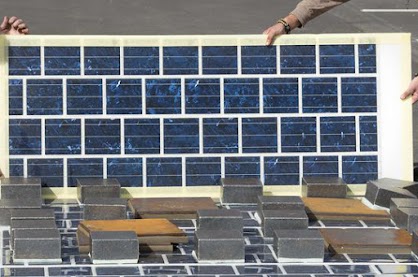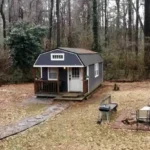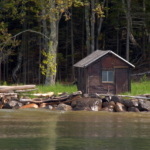
Generating power off the grid, or independently from traditional power infrastructure, has become increasingly popular.
As people seek to reduce their reliance on fossil fuels and decrease their carbon footprint. Three common options for generating power off the grid are solar power, wind power, and hydro power.
- Solar Power: Solar power involves the use of photovoltaic (PV) cells to convert sunlight into electricity. PV cells are typically installed on rooftops or in large fields where they can capture sunlight and convert it into direct current (DC) electricity. This electricity is then sent to an inverter, which converts it into alternating current (AC) electricity that can be used to power homes and businesses. Solar power is a popular option for off-grid power because it is easy to install, requires little maintenance, and can be scalable to meet different power needs.
2 Wind Power: Wind power involves the use of wind turbines to convert wind energy into electricity. Wind turbines are typically installed in locations where there is a steady flow of wind, such as on hilltops or near coastlines. When the wind blows, it turns the blades of the turbine, which generates electricity. This electricity is then sent to an inverter, which converts it into AC electricity that can be used to power homes and businesses. Wind power is a popular option for off-grid power because it is renewable, requires little maintenance, and can generate significant amounts of electricity.
3 Hydro Power: Hydro power involves the use of flowing water to generate electricity. A hydroelectric power plant typically involves a dam that is used to create a reservoir of water. The water is then released through turbines, which generate electricity. Hydro power is a popular option for off-grid power because it is renewable, reliable, and can generate significant amounts of electricity. However, hydro power can be more complex to install and maintain compared to solar or wind power.
In conclusion, solar power, wind power, and hydro electric power are all viable options for generating power off the grid. The choice of which option to use depends on factors such as the location, the amount of power needed, and the local climate. With the increasing availability of affordable renewable energy technologies, generating power off the grid has become a more feasible and accessible option for many people.
The costs involved in setting up off-grid power systems vary
These depend on the type and size of the system, the location, and the specific components used. Here are some of the major costs to consider:
- Equipment: The cost of equipment is one of the most significant expenses in setting up an off-grid power system. This includes solar panels, wind turbines, batteries, inverters, charge controllers, and any other components needed for the specific system. The cost of equipment can range from a few thousand to tens of thousands of dollars.
- Installation: The cost of installation will depend on the complexity of the system, the location, and the size of the system. For example, installing solar panels on a roof may be less expensive than installing a wind turbine in a remote location. The cost of installation can range from a few thousand to tens of thousands of dollars.
- Maintenance: Off-grid power systems require regular maintenance to ensure they are operating at maximum efficiency. This includes tasks such as cleaning solar panels, replacing batteries, and inspecting equipment. The cost of maintenance will depend on the type of system and the specific components used.
- Permitting and Regulatory Costs: Depending on the location and the specific system, there may be permitting and regulatory costs associated with setting up an off-grid power system. This can include fees for building permits, inspections, and other regulatory requirements.
- Backup Power: Off-grid power systems typically require a backup power source for times when there is not enough sun or wind to generate power. This can include a generator or additional batteries. The cost of backup power will depend on the specific system and the amount of backup power needed.
Overall, the cost of setting up an off-grid power system can range from a few thousand dollars to tens of thousands of dollars or more. However, it is important to note that off-grid power systems can provide significant long-term cost savings compared to traditional grid-connected power.






